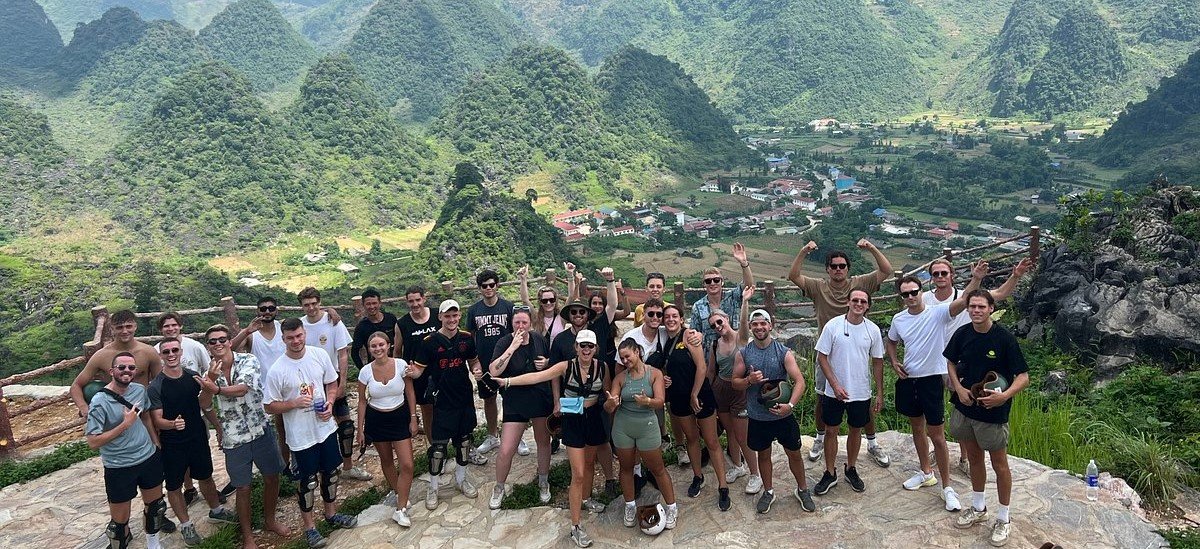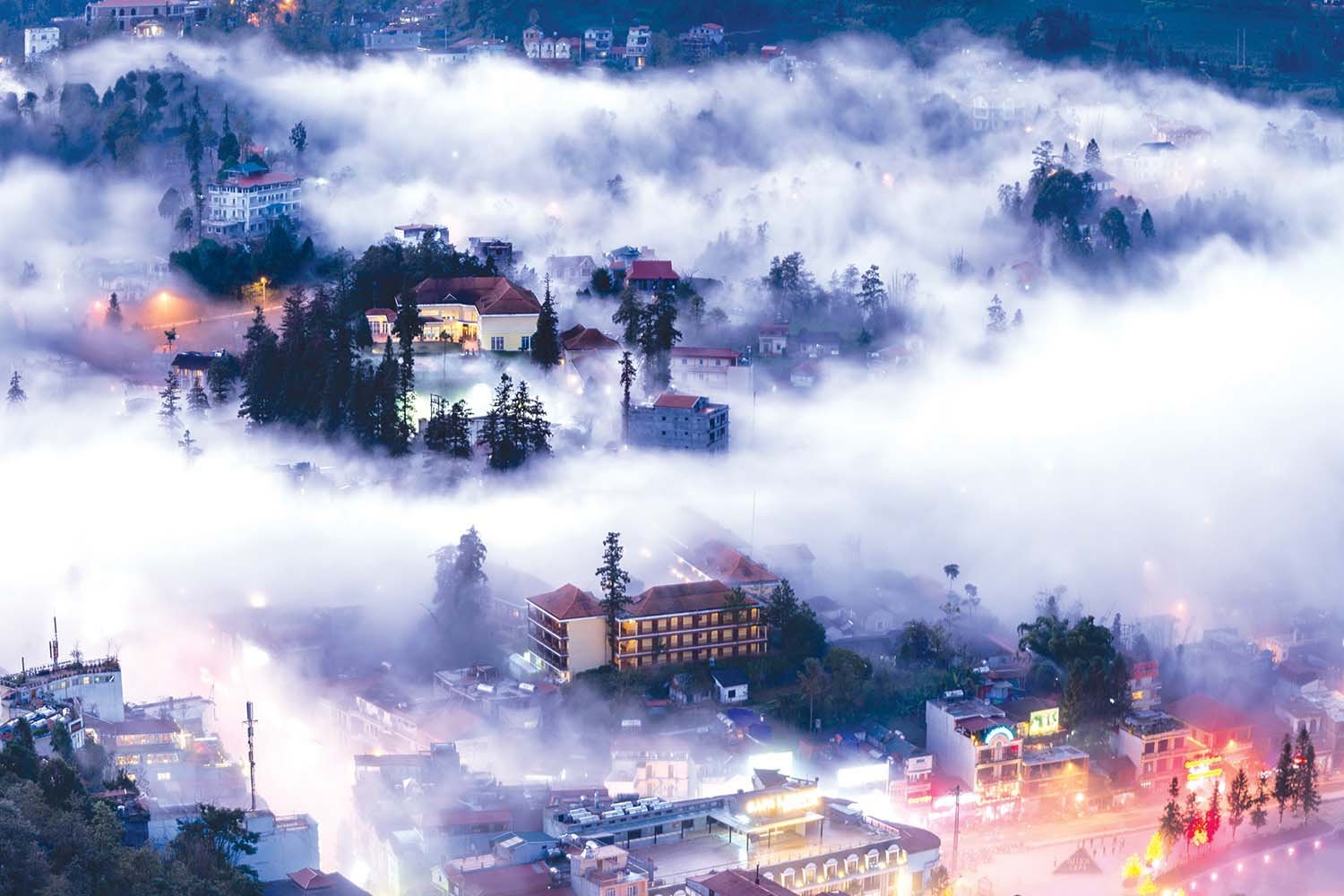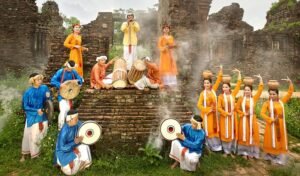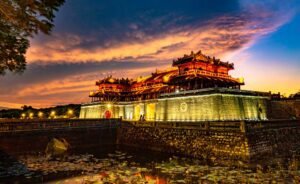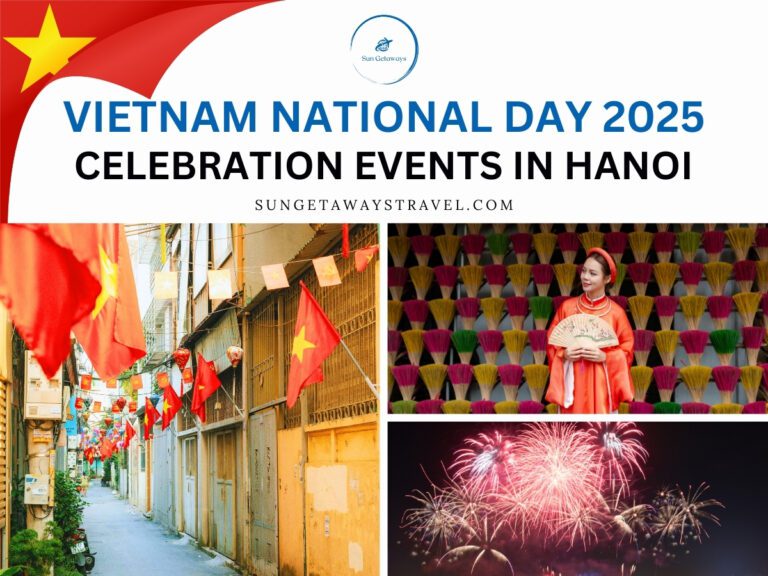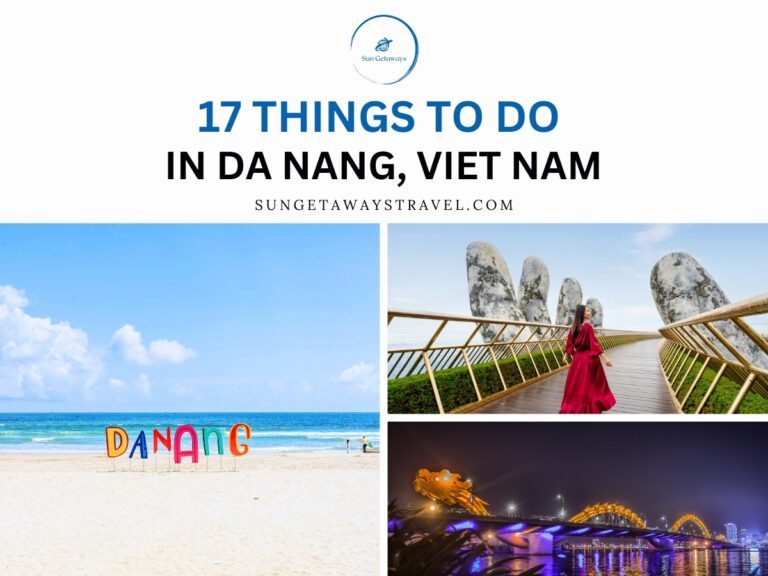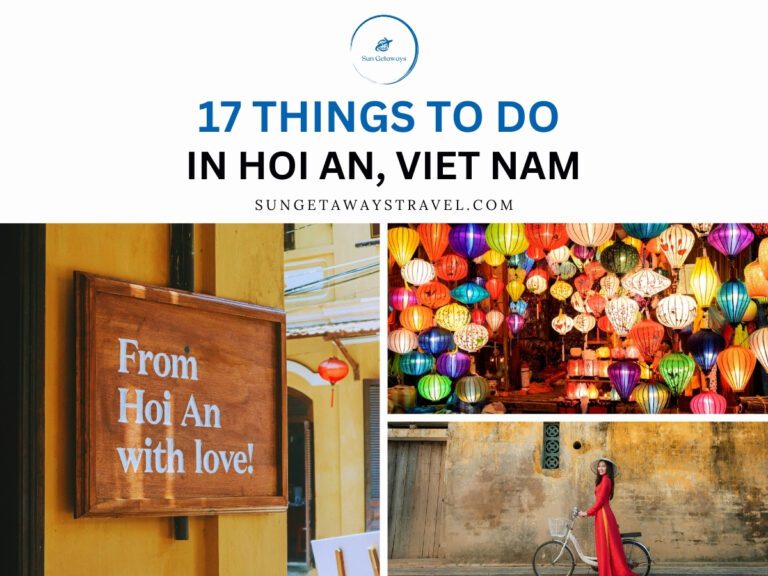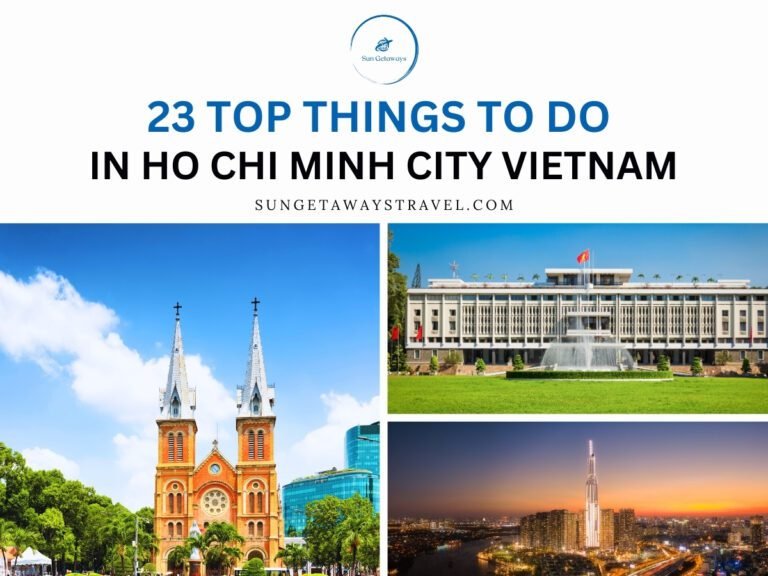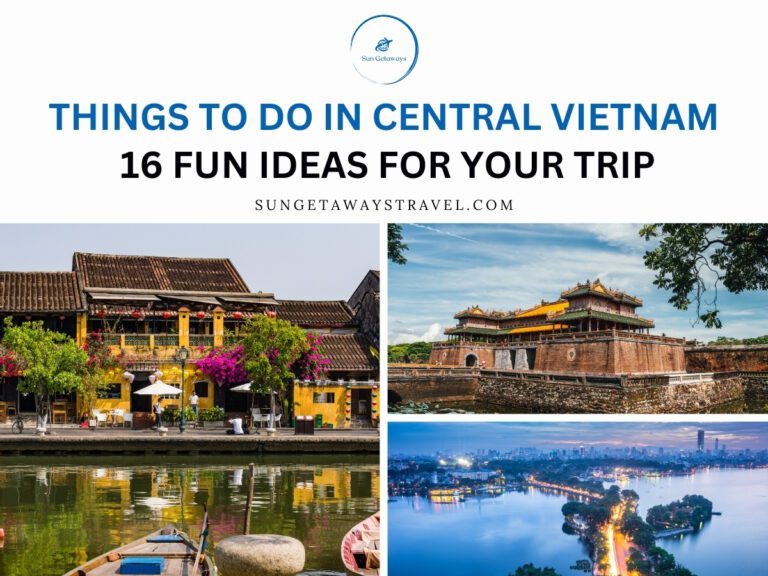Vietnam in Autumn (September to November): Why It’s the Best Time for Scenery and Trekking
Vietnam in autumn is a well-kept secret that rewards travelers with golden rice fields, cool mountain air, and postcard-perfect landscapes. From Sapa’s rice terraces shimmering under the harvest sun to the majestic Ha Giang Loop in October, autumn is widely regarded by locals and seasoned travelers as the best trekking season in Vietnam. While Vietnam in spring has its floral charm and summer is beachy, Vietnam in autumn offers a rare combination of scenic beauty, mild temperatures, and authentic cultural experiences.
If you’re wondering whether Vietnam in September, Vietnam in October, or Vietnam in November is right for you, this guide will unpack it all: weather patterns, must-visit destinations, what to pack, and expert tips for the journey.
1. Autumn Weather in Vietnam (September to November)
Understanding the autumn weather in Vietnam is key to planning a great trip. The climate varies dramatically by region:
Northern Vietnam (Sapa, Hanoi, Ha Giang)
Autumn in the north is often described as the most poetic time of year. Hanoi in September welcomes cooler temperatures and lower humidity. By October, crisp mornings and blue skies take over, ideal for sightseeing. November solidifies the transition into dry season, making it perfect for outdoor adventures. The autumn weather in Vietnam’s northern region is especially suited for photography, trekking, and cultural tours.
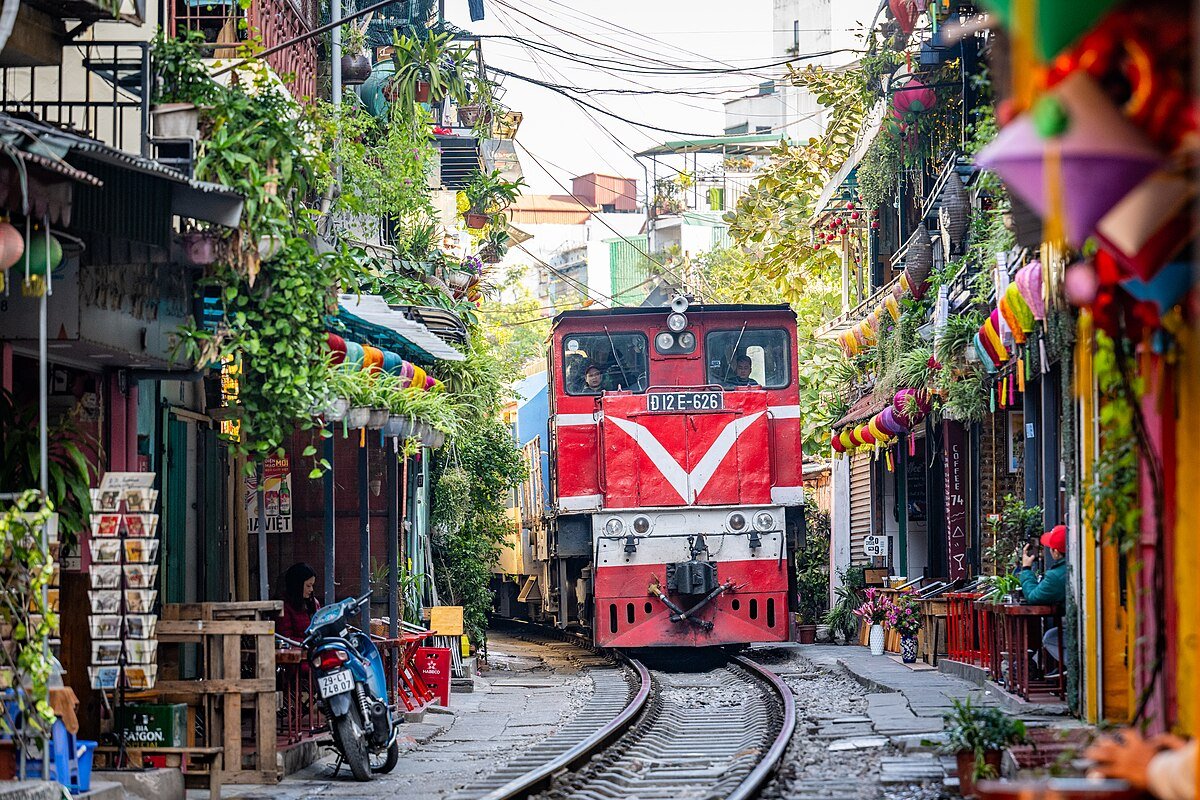

- Vietnam in September: Start of the most scenic time in the north. Expect misty mornings, golden rice terraces, and comfortable trekking weather.
- Vietnam in October: Peak season for trekking and photography. Sapa and Ha Giang Loop in October offer crisp air and breathtaking views.
- Vietnam in November: Cooler temperatures, clear skies, and the tail end of harvest season.
Central Vietnam (Hue, Da Nang, Hoi An)
Weather in Central Vietnam in October is a mixed bag. While Da Nang and Hoi An begin to feel the impact of the rainy season, it’s not constant; you may enjoy sunny mornings and brief, predictable showers in the afternoon. Hue may be wetter but offers moody, atmospheric landscapes. By November, the rains start to subside, especially towards the south-central coast like Quy Nhon or Phan Thiet.
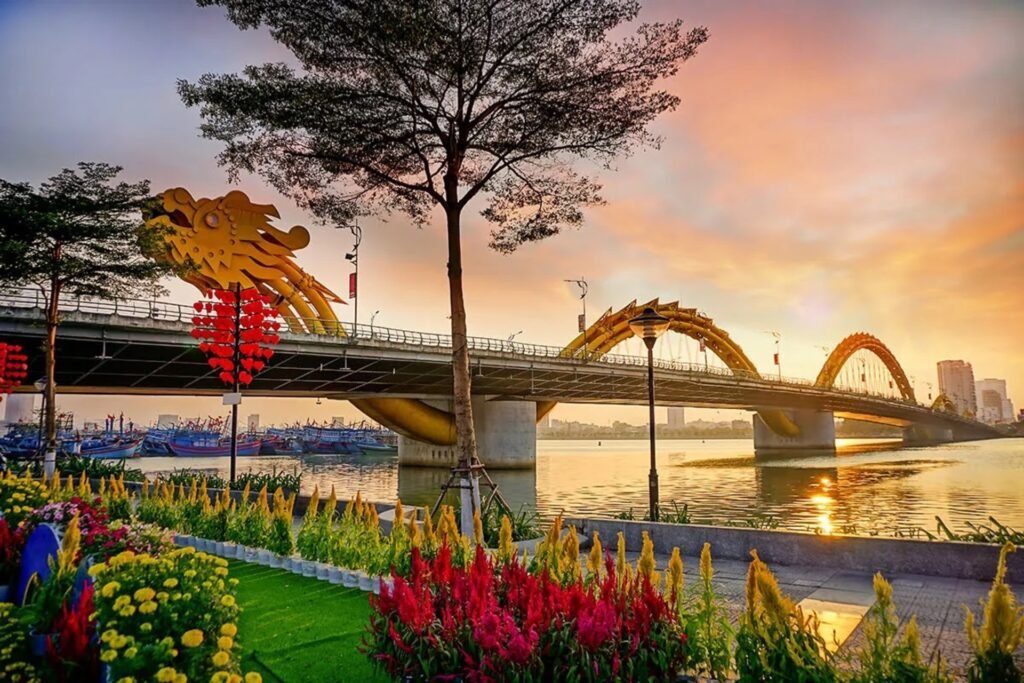

- Weather in Central Vietnam in October: This region enters its rainy season. While showers are common, they are usually short and followed by sunshine.
- Autumn in Hoi An: The lantern-lit streets glisten with post-rain charm, and cultural festivals keep things vibrant.
Southern Vietnam (Ho Chi Minh City, Mekong Delta, Phu Quoc)
The south transitions from the end of the rainy season in September to full dry season by November. If you’re asking, “Is November a good month for beaches in Vietnam?”—the answer is yes. By late October and November, Phu Quoc, Con Dao, and Mui Ne offer excellent beach weather and fewer crowds.


- Vietnam in September – October: The tail end of the rainy season. Expect occasional showers, lush greenery, and fewer tourists.
- Vietnam in November: This marks the start of the dry season—perfect for exploring the Mekong Delta and beach destinations like Phu Quoc, Con Dao, and Mui Ne.
2. Why Visit Vietnam in Autumn: Top Reasons
1. Golden Rice Fields Vietnam
Autumn is the best time to witness the famous golden rice terraces. The north, especially Sapa, Mu Cang Chai, and Ha Giang, comes alive with shimmering gold hues as harvest season peaks. This is also the best trekking season in Vietnam, with trails dry, temperatures cool, and views unparalleled.

2. Fewer Crowds, Better Deals
Compared to summer and Tet (Lunar New Year), autumn sees fewer tourists. This means more availability, quieter attractions, and lower prices—especially in September and early October.
3. Diverse Festivals & Culture
Vietnam in autumn is culturally rich. You can experience everything from Mid-Autumn lantern festivals in Hanoi to moon-worshiping ceremonies in the Mekong Delta. These events give insight into Vietnam’s layered traditions and spiritual life.
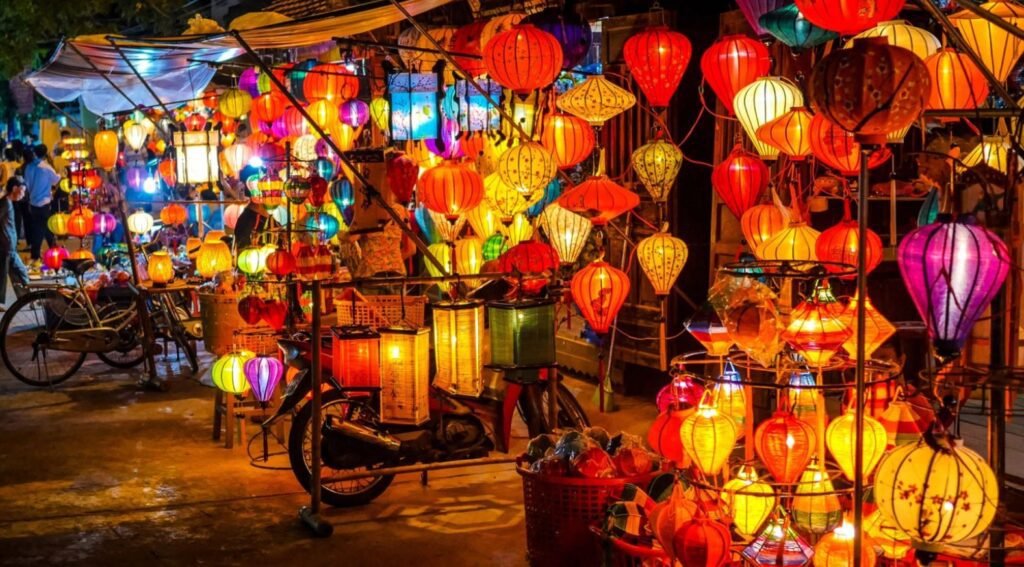

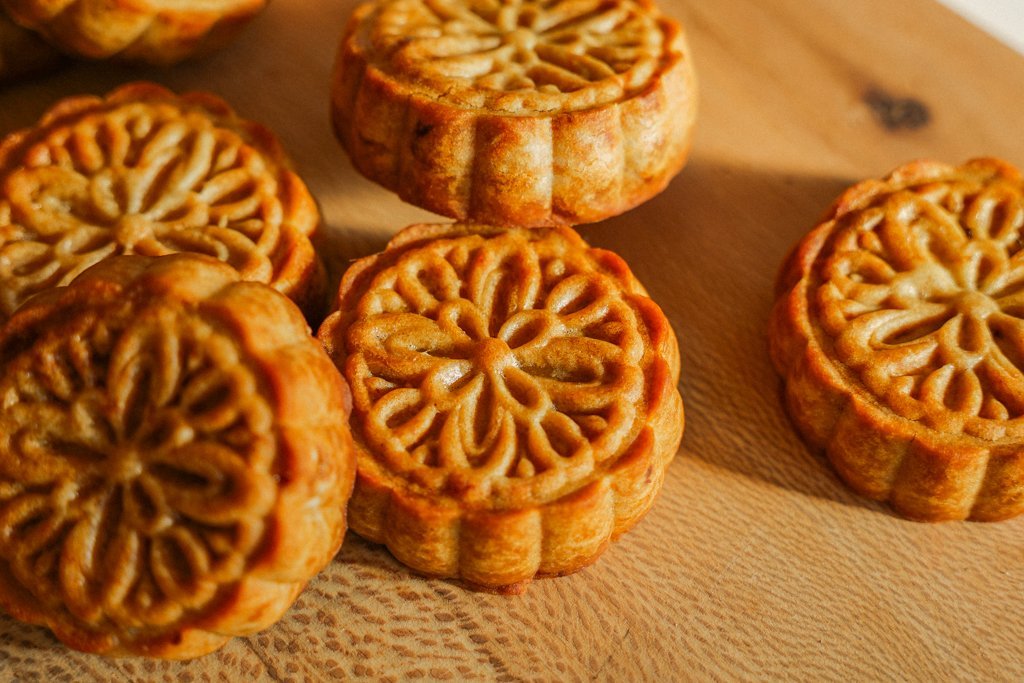

4. Delicious Seasonal Food
Autumn brings mooncakes, green rice (cốm), and tropical fruit harvests. Vietnam in September and October is peak season for foodies to enjoy seasonal specialties, from street snacks to family-style feasts.
5. Comfortable Autumn Weather Vietnam
Autumn weather Vietnam offers a sweet spot between extreme summer heat and winter chill. Northern Vietnam is cool and dry, Central Vietnam has bursts of rain and sun, and Southern Vietnam transitions into its best weather window.
While visiting Vietnam in spring is a fantastic choice, understanding the overall weather patterns can help you plan the perfect trip any time of year. For a complete overview, don’t miss our master guide on best time to visit Vietnam.
3. Best Places to Visit in Vietnam in Autumn (Ratings & Highlights)
Vietnam in autumn—from September to November—offers golden rice fields, cooler temperatures, and fewer crowds. This section provides a detailed breakdown of the best places to visit in Vietnam in autumn, complete with ratings and travel tips.
Whether you’re planning to explore Vietnam in September, Vietnam in October, or Vietnam in November, these destinations will guide your seasonal itinerary.
Northern Vietnam: Landscapes
Autumn is arguably the best time to travel across Northern Vietnam. With cooler air, golden rice terraces, and cultural festivals in full swing, the north offers a photogenic and immersive travel experience. If you’re seeking sweeping views, Vietnam in autumn in the north is a top choice.
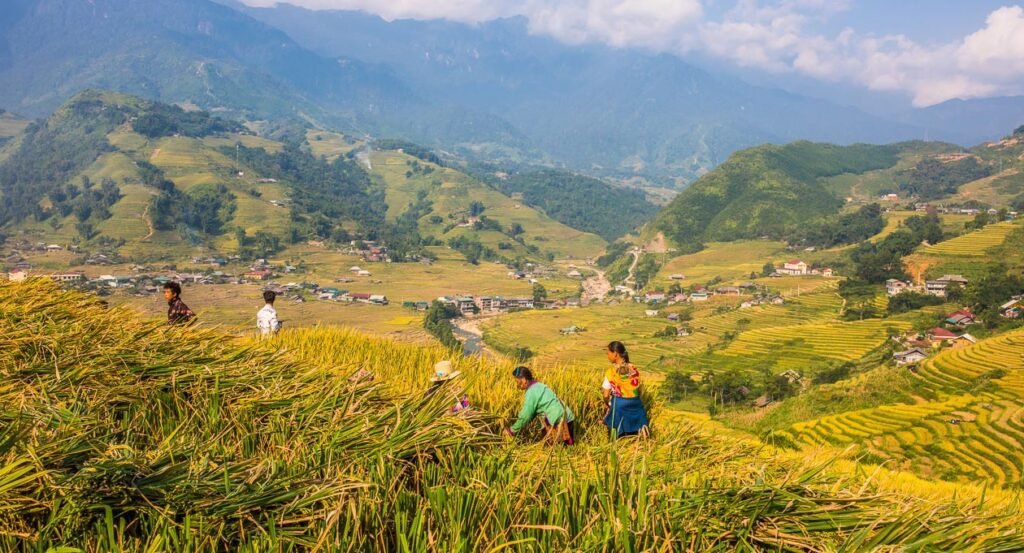

- Sapa – ⭐️⭐️⭐️⭐️⭐️ (5/5)
- Famous for its stunning terraced rice fields and vibrant hill tribe cultures, Sapa shines brightest from mid-September to early October. This is the ideal trekking season, with cool mountain air and breathtaking harvest scenes.
- Insider Tip: Arrive early to beat the fog and catch sunrise over the valleys.
- Ha Giang – ⭐️⭐️⭐️⭐️⭐️ (5/5)
- The Ha Giang Loop in October is a motorbiker’s dream. Roads wind through buckwheat flowers in bloom and valleys blanketed in golden rice.
- Travel Note: October weather is stable, but bring warm layers for chilly mountain nights.
- Mu Cang Chai – ⭐️⭐️⭐️⭐️½ (4.5/5)
- A hidden gem that bursts into life during harvest season. Vietnam in autumn doesn’t get more picturesque than this. It’s a haven for photographers and culture enthusiasts.
- Why It’s Unique: Less touristy than Sapa, but just as stunning.
- Hanoi – ⭐️⭐️⭐️⭐️ (4/5)
- Hanoi weather in September and October is cool and dry—the capital’s most pleasant season. Locals celebrate the arrival of autumn with mooncakes and strolls under golden milkwood trees.
- Vibe Check: Think French-colonial romance meets vibrant café culture.
Overall for Northern Vietnam in Autumn:
🍁 Verdict: If you love nature, trekking, or authentic cultural interaction, this region is a must. September to October offers ideal conditions and unbeatable visuals.
Central Vietnam: Cultural Charms & Seasonal Moods
Autumn in Central Vietnam is atmospheric. While some showers may linger, they often add a moody beauty to ancient towns and jungled landscapes. It’s also when Vietnam in October feels deeply romantic, making it a favorite for slow travelers.


- Hue – ⭐️⭐️⭐️⭐️ (4/5)
- Misty mornings wrap Hue’s royal tombs and pagodas in a mysterious glow. Rain is frequent but gentle, and it adds to the serenity of this historical city.
- Bonus: Fewer tourists mean quieter, more meaningful visits to the Citadel and Thien Mu Pagoda.
- Hoi An – ⭐️⭐️⭐️⭐️½ (4.5/5)
- Rain in Vietnam in October can turn Hoi An into a watercolor painting. Reflections from lanterns, wet cobblestones, and the scent of fresh bánh mì make evenings magical.
- What to Wear in Vietnam in October: Pack light waterproof clothing and sandals with grip.
- Phong Nha-Ke Bang – ⭐️⭐️⭐️ (3/5)
- Early autumn still allows for caving and jungle trekking. However, check the forecast—late October rains may affect river cave access.
- Recommendation: Go in late September or early October for the best chance of dry conditions.
Overall for Central Vietnam in Autumn:
🌧️ Verdict: A poetic season for those who appreciate atmosphere and culture. Just keep an eye on the weather and stay flexible with plans.
Southern Vietnam: End of Rainy Season, Beginning of Beach Bliss
Unlike the north and center, southern Vietnam in autumn brings the tail-end of the monsoon. By Vietnam in November, it’s warm, drier, and perfect for city exploration or beach retreats.


- Ho Chi Minh City (Saigon) – ⭐️⭐️⭐️⭐️ (4/5)
- The intense humidity fades in November, making the city’s buzz more enjoyable. Explore street food alleys, rooftop bars, and colonial architecture with fewer weather disruptions.
- Local Tip: Visit early morning or late evening to avoid midday heat.
- Mekong Delta – ⭐️⭐️⭐️⭐️ (4/5)
- Post-monsoon, the Delta becomes vibrant and alive. Floating markets are in full swing, and river tours provide a deep dive into local life.
- Best Time: Late October to November, when waters are high but not flooding.
- Phu Quoc – ⭐️⭐️⭐️⭐️⭐️ (5/5)
- If you’re asking, “is November a good month for beaches?“—the answer is a resounding yes. November kicks off the island’s dry season, with clear skies and calm waters ideal for diving, snorkeling, and sunset lounging.
- Pro Tip: Book early—this is the start of high season.
Overall for Southern Vietnam in Autumn:
☀️ Verdict: A comfortable and scenic time to explore or unwind. Whether you’re chasing flavor or relaxation, Vietnam in November offers reliable weather and lively atmosphere.
Want More Seasonal Travel Insights?
While autumn is one of the most stunning seasons to visit Vietnam, understanding how each month and region differs can make your travel plans even better. For a full guide to when and where to go year-round, don’t miss our master post:
👉 The Best Time to Visit Vietnam: A Complete Month-by-Month & Regional Guide
4. Autumn Festivals and Events in Vietnam
Autumn in Vietnam is full of colorful and meaningful celebrations. Here’s a list of major festivals by month and region:
Overview Table of Autumn Festivals:
| Festival | Date | Region | Description |
|---|---|---|---|
| Mid-Autumn Festival | Late September | Nationwide | Lantern parades, mooncakes, and family gatherings |
| Vietnamese Women’s Day | October 20 | Nationwide | Celebrating women with flowers, gifts, and performances |
| Ethnic Harvest Festivals | Sep–Oct | Northern Highlands | Traditional dances, rice harvest rituals, and food fairs |
| Ooc Om Bok Festival | Oct–Nov | Mekong Delta | Moon worship, boat races, Khmer cultural celebration |
| Waterway Festival | Oct–Nov | Mekong Delta | River blessings and local waterway traditions |
| Kathina Ceremony | October–November | Mekong Delta | Buddhist robe-offering and temple ceremonies |
Cultural Highlights
- Mid-Autumn Festival: Vietnam in September is magical with streets glowing in lantern light, especially in Hanoi and Hoi An.
- Ooc Om Bok: Unique to the Khmer community, this event showcases dragon boat races and traditional dances.
- Harvest Rituals: Northern minorities celebrate the end of harvest with dance, food, and prayer.
Packing Tip: Bring quick-dry clothing for unpredictable weather shifts, especially if you plan to attend outdoor festivals or join treks.
5. What to Pack for Autumn in Vietnam
Packing for Vietnam in autumn depends on your destination and activity, but here are the essentials:
- For the North: Light jacket, scarf, comfortable trekking shoes, and layers.
- For Central: Quick-dry clothes, umbrella, waterproof bag cover.
- For the South: Summer clothes, mosquito repellent, swimwear for November beaches.
- General: Sunscreen, reusable water bottle, and a power bank for photography marathons.
- Layered Clothing: Especially for north Vietnam. Mornings and evenings in October/November can be chilly.
- Rain Jacket/Umbrella: For Central Vietnam and early autumn showers.
- Trekking Shoes: Essential for Sapa, Ha Giang, and Mu Cang Chai.
- Insect Repellent: Especially in rural and tropical regions.
- Waterproof Bags: For electronics and documents.
- Sun Protection: Sunglasses, sunscreen, and hats.
- Respectful attire: For visiting temples and attending local festivals.
Packing Tip: Bring quick-dry clothing for unpredictable weather shifts.
6. Insider Travel Tips for Autumn Visitors
Traveling to Vietnam in autumn offers cooler weather, vibrant cultural events, and golden-hued landscapes—but a bit of planning goes a long way. Here are expert tips to help you make the most of your fall adventure:
⛰️ Time Your Trekking Around the Rice Harvest (Mid-September to Early October)
If you’re heading north, the golden rice terraces of Mu Cang Chai, Sapa, and Y Ty peak from mid-September to early October. This is the best time to visit Vietnam and witness golden rice fields, offering breathtaking views and excellent photo ops.
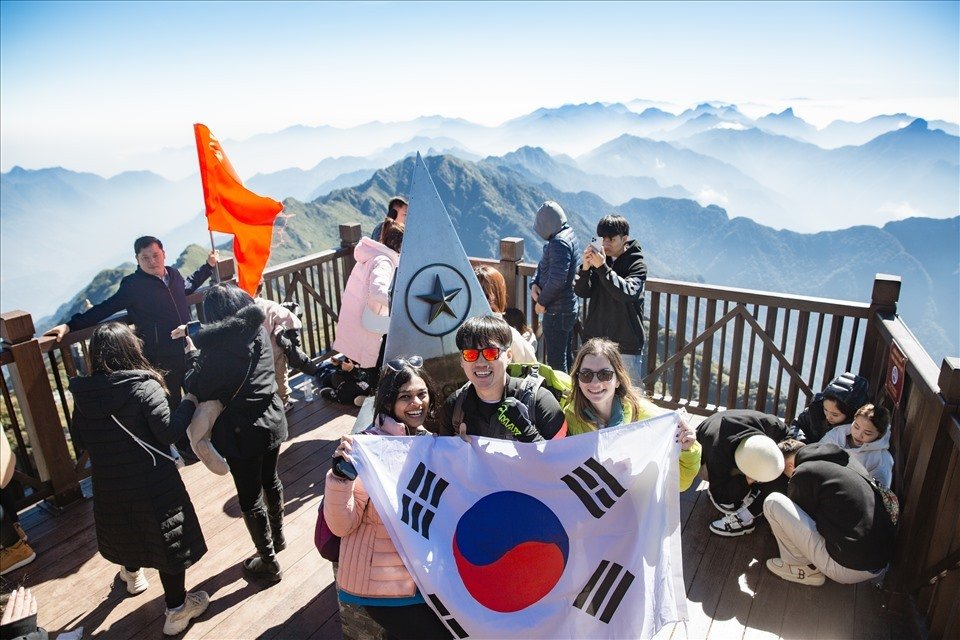

Pro Tips:
- Arrive during the last two weeks of September for peak color.
- Book local homestays in advance—they fill up fast during harvest festivals.
- Wake up early to catch the misty sunrise over the terraces.
🌧️ Prepare for Central Vietnam’s Rainy Season
Vietnam in October, especially in Hue, Da Nang, and Hoi An, sees unpredictable showers due to the monsoon. But don’t cancel your trip—plan smart.
What to Do:
- Pack a lightweight rain poncho and quick-dry clothing.
- Add indoor-friendly activities to your itinerary: cooking classes, traditional art workshops, or a Vietnamese massage.
- Consider early morning outings when rain chances are lower.
📅 Avoid Domestic Holiday Crowds
Autumn hosts two key Vietnamese holidays:
- Mid-Autumn Festival (Tết Trung Thu) – Usually in late September or early October, featuring lantern parades and mooncakes.
- Vietnamese Women’s Day (October 20) – A sentimental national celebration.
Both events increase domestic travel, especially to cities like Hanoi, Da Nang, and Ho Chi Minh City.
How to Prepare: - Book hotels, trains, and flights at least 2–3 weeks in advance.
- Expect surges in prices and limited availability near holiday weekends.
- For a quieter experience, travel mid-week or head to lesser-known destinations.
🥾 Explore Lesser-Known Mountain Trails
Popular trekking routes like Fansipan can get crowded, but Vietnam in autumn is perfect for discovering more secluded gems.
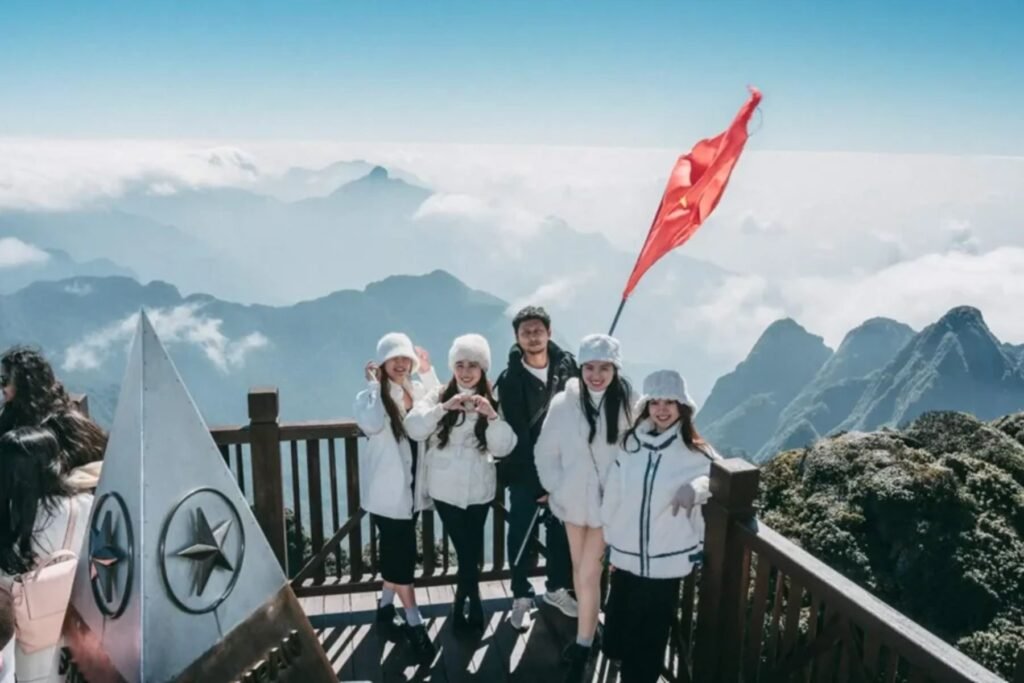

Top Alternatives:
- Ta Xua (Son La) – Famous for “cloud hunting” and tranquil hikes.
- Y Ty (Lao Cai) – Remote beauty, terraced fields, and ethnic minority culture.
- Pu Luong (Thanh Hoa) – Lush hills, bamboo forests, and charming villages.
Why Go Offbeat? - Avoid tourist congestion.
- Enjoy authentic local interactions.
- Capture untouched landscapes.
🎉 Book Early for Autumn Festivals
Fall is packed with cultural festivals and events, especially in Sapa, Hoi An, and the Mekong Delta. Local festivals often coincide with the harvest and religious calendars.
Notable Autumn Events:
- Mid-Autumn Festival – Best experienced in Hoi An with its glowing lantern displays.
- Sapa Love Market (monthly) – A cultural exchange for ethnic minorities.
- Floating Lantern Festivals in the Delta.
Insider Tip: - Check local event calendars and secure accommodations ahead of time, especially if traveling in September or October.
🎒 What to Pack for Autumn in Vietnam
Since autumn weather in Vietnam varies by region, packing smart is key.
Essentials Include:
- Light jacket or windbreaker for cool nights in the north.
- Breathable rain gear for Central Vietnam’s showers.
- Sturdy walking shoes for trekking trails.
- Insect repellent for rural and forested areas.
- Camera or drone – autumn is arguably the most photogenic season!
🧭 Final Advice: Embrace the Unexpected
Vietnam in autumn is a season of transition—cool mornings, warm afternoons, and sudden downpours. It’s also a season of surprises, from golden fields to local harvest festivals you’ll stumble upon in remote villages.
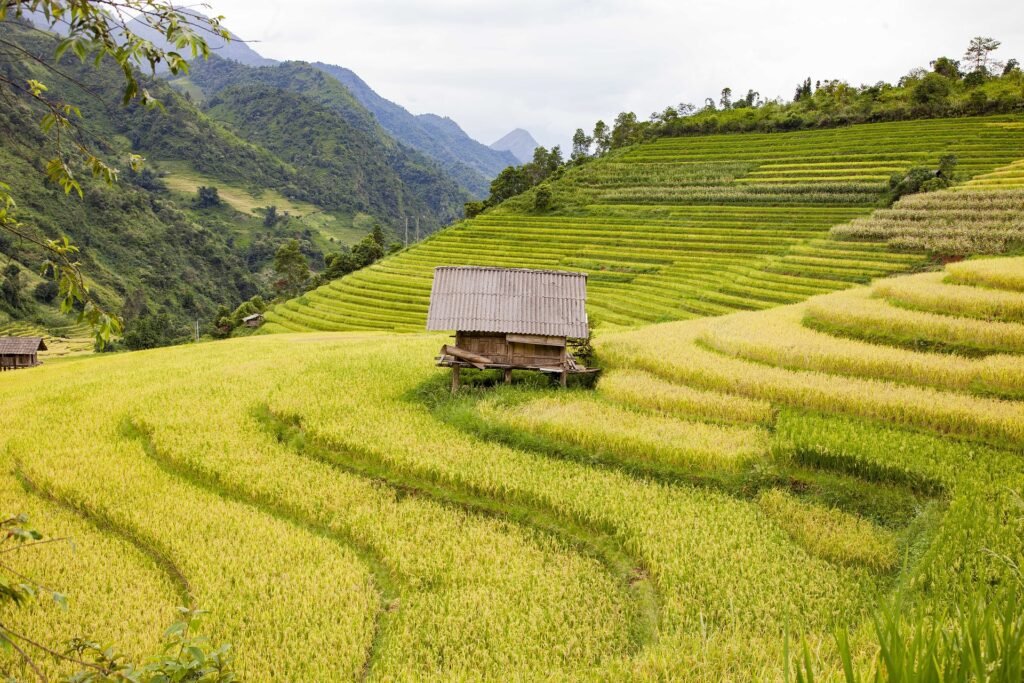

Be flexible, stay curious, and you’ll find that autumn in Vietnam might just be your favorite travel season of all.
7. Final Thoughts: Why Autumn May Be Vietnam’s Best Season
Vietnam in autumn offers the best of both worlds: nature’s grandeur and cultural depth. Whether you’re hiking through golden valleys, watching a river festival in the Mekong, or strolling under glowing lanterns in Hoi An, this season rewards travelers with unforgettable experiences.
While visiting Vietnam in spring is a fantastic choice, understanding the overall weather patterns can help you plan the perfect trip any time of year. For a complete overview, don’t miss our master guide on best time to visit Vietnam.
For more in-depth planning and tips, check out our related posts:
Ask a question
Leave a Comment (0)
No questions yet. Be the first to ask a question!


